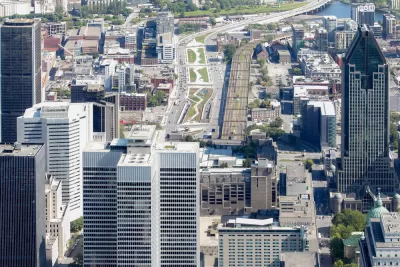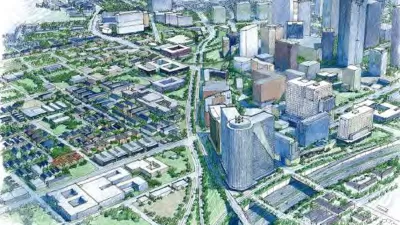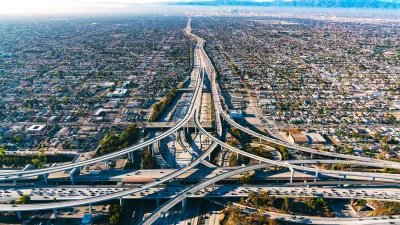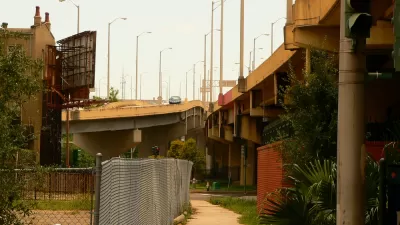Cities across the country are reevaluating the impacts of major highway on neighborhoods and looking for ways to revitalize and reconnect communities.

In a piece rich with visual aids and aerial photos that illustrate how cities looked before highways, New York Times writers Nadja Popovich, Josh Williams and Denise Lu ask "can removing highways fix American cities?"
Until recently, "[f]ederal and state funds have historically gone to building highways, not removing them." Transportation Secretary Pete Buttigieg has acknowledged the unequal legacy of highway projects, saying that "there is racism physically built into some of our highways." To address this, President Biden's infrastructure plan proposes "$20 billion to help reconnect neighborhoods divided by highways."
San Francisco's Embarcadero Freeway provides one of the country's oldest examples of successful highway removal. When the freeway was "irreparably damaged" by the 1989 Loma Prieta earthquake, the area was redeveloped into what is now a bustling pedestrian-friendly waterfront. "[I]n 2013, the city of Rochester, in upstate New York, won a nearly $18 million grant from the Obama administration that allowed it to take out an eastern segment of its sunken Inner Loop freeway, known locally as 'the moat.'" Since then, the area has experienced a transformation that includes new housing, bike lanes, and roads that connect more of the neighborhood to make walking more convenient.
"In recent years, more cities have started to seriously rethink some of their highways. The Congress for New Urbanism, a group that tracks highway removals, counted 33 proposed projects in 28 American cities." While plans for highway removal "could make life better for local residents as well as the planet," the proposals could also lead to displacement of vulnerable communities. "We need to figure out how to change without displacing people," says Dr. Garrick of the University of Connecticut. "The proposed Democratic legislation hopes to avoid that paradox. The bill would fund community outreach and engagement by local groups. And it prioritizes capital construction grants for projects that include measures like land trusts that would ensure the availability of affordable housing for local residents. "
FULL STORY: Can Removing Highways Fix America’s Cities?

Planetizen Federal Action Tracker
A weekly monitor of how Trump’s orders and actions are impacting planners and planning in America.

Congressman Proposes Bill to Rename DC Metro “Trump Train”
The Make Autorail Great Again Act would withhold federal funding to the system until the Washington Metropolitan Area Transit Authority (WMATA), rebrands as the Washington Metropolitan Authority for Greater Access (WMAGA).

The Simple Legislative Tool Transforming Vacant Downtowns
In California, Michigan and Georgia, an easy win is bringing dollars — and delight — back to city centers.

The States Losing Rural Delivery Rooms at an Alarming Pace
In some states, as few as 9% of rural hospitals still deliver babies. As a result, rising pre-term births, no adequate pre-term care and "harrowing" close calls are a growing reality.

The Small South Asian Republic Going all in on EVs
Thanks to one simple policy change less than five years ago, 65% of new cars in this Himalayan country are now electric.

DC Backpedals on Bike Lane Protection, Swaps Barriers for Paint
Citing aesthetic concerns, the city is removing the concrete barriers and flexposts that once separated Arizona Avenue cyclists from motor vehicles.
Urban Design for Planners 1: Software Tools
This six-course series explores essential urban design concepts using open source software and equips planners with the tools they need to participate fully in the urban design process.
Planning for Universal Design
Learn the tools for implementing Universal Design in planning regulations.
Smith Gee Studio
City of Charlotte
City of Camden Redevelopment Agency
City of Astoria
Transportation Research & Education Center (TREC) at Portland State University
US High Speed Rail Association
City of Camden Redevelopment Agency
Municipality of Princeton (NJ)





























